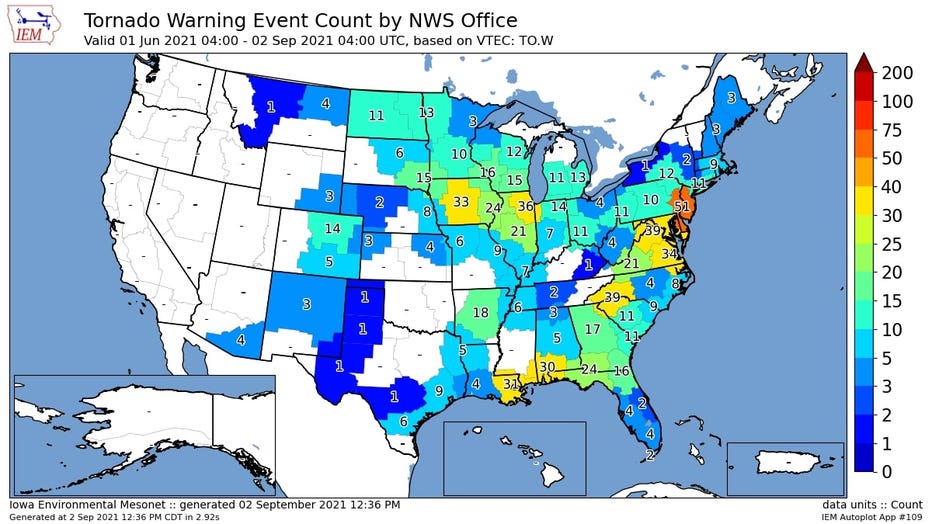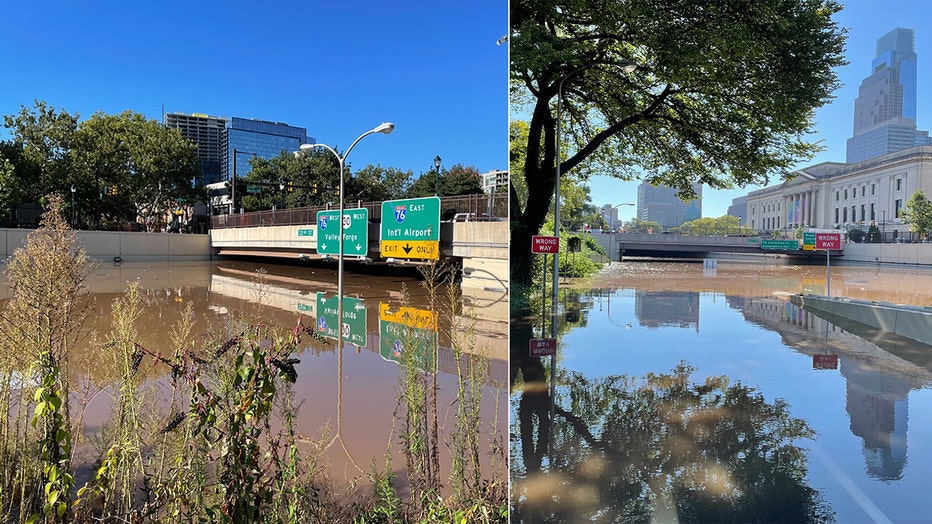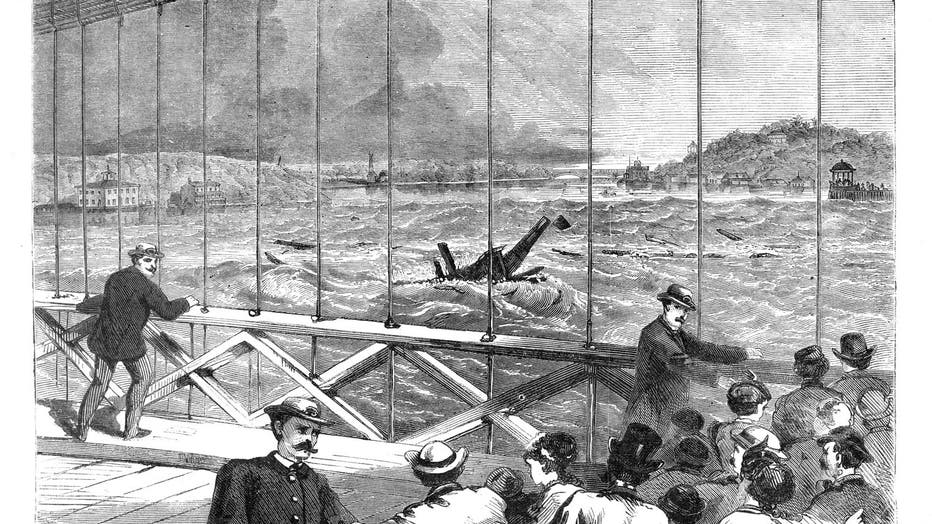NWS issued unprecedented Tornado Emergency in NJ hours before historic Schuylkill River flood
Nearly 10 inches of rain fall in some areas as Schuylkill River sees historic flooding
Remnants of Ida dropped nearly 10 inches of rain in Coatesville, and nearly nine inches in Newtown.
PHILADELPHIA - The National Weather Service office in Mount Holly issued 16 Tornado Warnings on Wednesday, including its first-ever Tornado Emergency, hours before the Schuylkill River reached its highest crest in nearly 152 years and flooded parts of Philadelphia on Thursday.
That's two additional Tornado Warnings than the 14 that were issued during the July 29 outbreak, which included the Mount Holly weather service's first "Particularly Dangerous Situation," or PDS, Tornado Warning, meaning there was credible evidence of a damaging tornado on the ground.
In fact, it took 3.5 pounds of paper to print out all the warnings – tornado, flash flood and severe thunderstorm – issued by the NWS in Mount Holly on Wednesday.
One such Tornado Warning issued Wednesday was even rarer than the PDS warning issued just over a month earlier.
At 7:04 p.m., the NWS issued a Tornado Emergency for Bristol and Croydon, Pennsylvania, and Burlington, New Jersey. This is the highest level of alert the NWS can issue for a tornado.
According to the NWS, Tornado Emergencies are reserved for rare situations when all of the following are true:
- A severe threat to human life is imminent or ongoing
- Catastrophic damage is imminent or ongoing
- Reliable sources confirm a damaging tornado on the ground (either storm spotters have an actual visual of the twister or Doppler radar imagery strongly suggests the existence of a damaging tornado)
The Mount Holly weather service office has issued 51 Tornado Warnings since June 1 – more than any other office in the United States.

Number of Tornado Warnings issued by each National Weather Service office since June 1, 2021. (Iowa Environmental Mesonet)
NWS storm surveys were in progress across our region on Thursday to determine the strength of Wednesday's tornadoes in Pennsylvania and New Jersey. As of Thursday afternoon, the NWS had confirmed that at least six tornadoes touched down.
The Mount Holly weather service also issued four Flash Flood Emergencies on Wednesday, which are "issued for exceedingly rare situations when a severe threat to human life and catastrophic damage from a flash flood is happening or will happen soon." It had issued four other Flash Flood Emergencies in the past.
However, the NWS office in New York City issued its first-ever Flash Flood Emergency Wednesday evening, then had to issue two more later Wednesday night. One of the emergencies covered more than 9 million people in the Big Apple and lower Hudson Valley.
While the city of Philadelphia picked up only 2.37 inches of rain Wednesday, many locations north and west of the city received 6 to 9 inches of rain, with isolated areas receiving as much as 9 to 10 inches.
All-time records for one-hour rainfall were set Wednesday night in both New York City and Newark, New Jersey, where more than 3 inches fell in just an hour. Newark's rainfall total through midnight was a whopping 8.41 inches, smashing its all-time wettest day on record.
All of this heavy rain caused the Schuylkill River in Philadelphia to reach its highest level since the record crest of Oct. 4, 1869. That was nearly 152 years ago.
On Thursday morning, the river level at the Philadelphia gauge was 16.35 feet, the second-highest crest on record. Flooding begins at 11 feet, according to the NWS.
The Vine Street Expressway in Center City was entirely submerged Thursday morning.

Water levels on the Schuylkill River will gradually come down over the next 24 hours. The NWS said it's predicted to drop below flood stage by Friday morning.
The record flood of October 1869 was fueled by the outer bands of a hurricane, according to the Philadelphia Water Department, who noted that anywhere from 5 to 10 inches of rain fell over various parts of the Schuylkill River watershed.

View of the Schuylkill River during the flood of Oct. 4, 1869, the highest flood on record. View is from the Wire Bridge (on the line of the present-day Spring Garden Street Bridge) looking upstream toward the Fairmount Dam (invisible under the water (Cover illustration, Frank Leslie’s Illustrated Weekly, Oct. 23, 1869, via the Philadelphia Water Department)
___
- 3 killed in storm-related incidents in Montgomery County, including woman hit by tree
- Schuylkill River overflows following night of intense rainfall, damaging storms
- Mullica Hill Tornado: Several homes destroyed by 'large and extremely dangerous' twister
- Thousands without power in wake of destructive storms from Ida
- Bodies pulled, others rescued in NYC, NJ storm waters
___
DOWNLOAD: FOX 29 NEWS APP | FOX 29 WEATHER AUTHORITY APP
SUBSCRIBE: Good Day Digest Newsletter | FOX 29 Philly on YouTube
FOLLOW: Facebook | Instagram | Twitter

